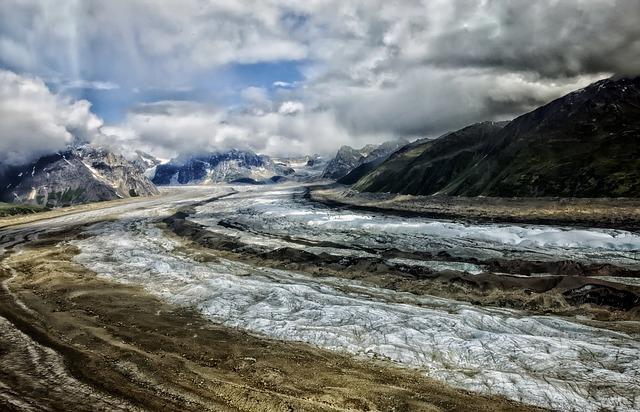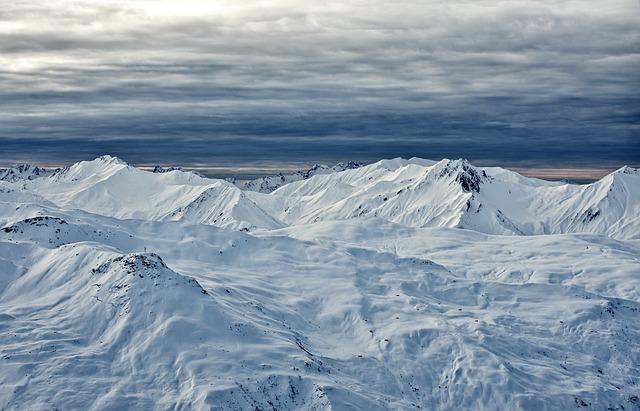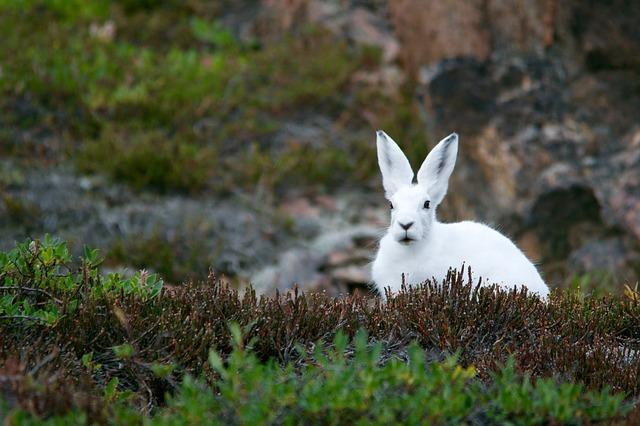What Is a Tundra Ecosystem?


Tundras are geographical areas which are characterized by short growing seasons, harsh conditions and other limitations for the development of life. While these geographical areas constitute a biome, each tundra biome can have various ecosystems within it. They are all subject to certain types of landscape, climate, flora and fauna which can limit many types of organisms. This does not mean there is no life in the tundra. Tundra ecosystems are home to a greater level of biodiversity than many of us believe, but the living organisms that do thrive there are specifically adapted to this specific environment.
At thedailyECO, we learn more by asking what is a tundra ecosystem? We look at the climate, plants and animals that thrive in the tundra biome, as well as the other important characteristics of these geographical regions.
What is a tundra ecosystem?
Before we can know what is a tundra ecosystem, we have to find out what is a biome. A biome is a geographical location that is defined by its specific climate, as well as the animal and plant life that can live within it. A tundra is a type of biome that is characterized by a harsh environment with low temperatures which inhibits growth. For example, there are few trees in tundras because they do not have sufficient time or environments to grow.
Tundra ecosystems are various ecosystems which can be located within this specific tundra biome. While there is some variation between them, they typically have a bioclimatic landscape characteristic of subglacial areas. The tundra is typical of polar areas located at high latitudes, generally in the northern hemisphere of the planet. They can be observed in regions such as:
- Alaska
- Northern Canada
- Northern Antarctica
- Northern Europe
- Siberia
- Iceland
- Russia
- Scandinavia
- Southern Greenland
- Highest areas of Chile and Argentina
- Some subantarctic islands
A tundra is characterized by having a very cold climate with temperatures below 0ºC (32ºF) for most of the year and can reach -70ºC (-94ºF) in the winter months. Precipitation is scarce and the winds are very strong. The terrain and soil of the tundra hardly has any nutrients, being practically frozen for most of the year. There is relatively little diversity of both plant and animal species, but this does not mean it is devoid of life.
Regarding its geology, it is characterized by the presence of a stable ice layer located at low depth called permafrost. We can also find large frozen surfaces which melt in the summer months giving rise to swamps or peat bogs.
Learn more about the difference between a biome and an ecosystem with our related guide.

Types of tundra ecosystems
There are various biomes across the world which can be accurately described as types of tundra. The most important are:
- Arctic tundra: located in the northern hemisphere, covering much of Canada and Alaska. Within the scarce diversity of the tundra, we can consider that there is a considerable variety of plants and animals, capable of resisting low temperatures. The Arctic tundra can also be broken down into smaller ecosystems which include coastal, upland and lowland Arctic tundra, all characterized by specific characteristics.
- Alpine tundra: it is located in mountainous areas, located at high altitudes, so temperatures are slightly lower. In them we can find fewer species of plants and animals than in the Arctic tundra, partly due to the other adverse conditions brought upon by high altitudes.
- Andean tundra: similar to Alpine tundra, these elevated ecosystems have low temperatures due to their high altitudes. They mainly have low-growing vegetation.
- Antarctic tundra: it is the least common type of tundra ecosystem, found mainly on islands such as the Kerguelen Islands, South Georgia and the South Sandwich Islands. As they are far from continents, they have less diversity than the Arctic and Alpine tundra, although it is possible to see seals and penguins in their surroundings.
Learn more about the geology of certain tundras with our article explaining what is glacial erosion?

Examples of tundra plants
Many plant species cannot exist in tundra ecosystems, thanks to the extreme temperatures typical of the tundra climate, as well as the scarcity of nutrients and precipitation. As a defining trait of the tundra, there are no trees in the tundra, although we can find some other small shrub species dispersed in the tundra landscape.
Generally the plants that do thrive in tundra ecosystems are subject to a series of adaptations that allow their survival in such a hostile territory. For example, they grow near rocks that protect them from the wind, germinate and flower quickly in the summer months and maintain small dimensions that allow them to absorb the heat of the ground.
With this in mind, we can say the vegetation of the tundra is mainly made up of mosses, lichens, small shrubs and perennial herbs. The main flora of the tundra is the following:
- Dwarf birch: barely reaches 70 cm in height, so it is not considered a tree, but rather a shrub.
- Reindeer lichen: a lichen typical of this place that can live up to more than 500 years.
- Jelly lichen: the largest lichen that we can find since it measures between 4 and 6" (10 and 15 cm).
- Lingonberry: it is a small plant at around 12" (30 cm) high that has sweet-tasting berries.
- Black crowberry: as in the previous tundra plant, it has sweet-tasting berries. This plant has been used in traditional medicinal for many years.

Examples of tundra animals
As in the case of flora, the unfavorable conditions characteristic of the tundra prevent the presence of a great diversity of species. However, you may be surprised at the animals which can thrive in the tundra ecosystem. Most of them develop in the Arctic tundra because there is a greater amount of food. They tend to be near costal tundra or even in the seas, as we can see with seals and sealions.
Generally, the animals that remain in these ecosystems have adapted to their conditions to survive. Such adaptations include protecting themselves with thick layers of fat under their skin and thick fur coat. In addition, their coats are often white in color in order to blend in with the environment and evade predation. They may also change fur color seasonally, but it will depend on the species. Some of the tundra ecosystem animals include:
- Arctic hare: this lagomorph is distributed countries such as Alaska, Canada, Greenland and Scandinavia. The color of its fur varies depending on the season of the year, being lighter in the winter months and presenting darker shades in summer.
- Caribou: it is a reindeer native to the tundra of the northern hemisphere, although it has adapted to living in various surroundings. It can also be found today on the subantarctic islands.
- Stoat: it is a small carnivorous mammal, similar to a weasel. It lives in the north of the USA, Canada and Eurasia.
- Arctic wolf: it is smaller in size than the gray wolf and varies the color of its fur depending on the season of the year. It is found in different regions of the Arctic. Discover more about this and the other types of wolves in our related guide.
- Polar bear: it is the largest mammal that we can find in any tundra ecosystem. It is distributed mainly in some regions of Canada, Alaska and the Arctic. In the following article you can learn about the evolution of animals such as the polar bear with our article on what is divergent evolution?
- Snowy owl: also known as the Arctic owl or polar owl. It is a large bird, whose plumage is mainly white, although females and younger species may have dark spots on their abdomen. Learn about the difference between true owls and barn owls.
Now we have more information on the climate, plants and animals found in tundra ecosystems, you may want to learn more with our guide to what are polar ecosystems?

If you want to read similar articles to What Is a Tundra Ecosystem?, we recommend you visit our Ecosystems category.







